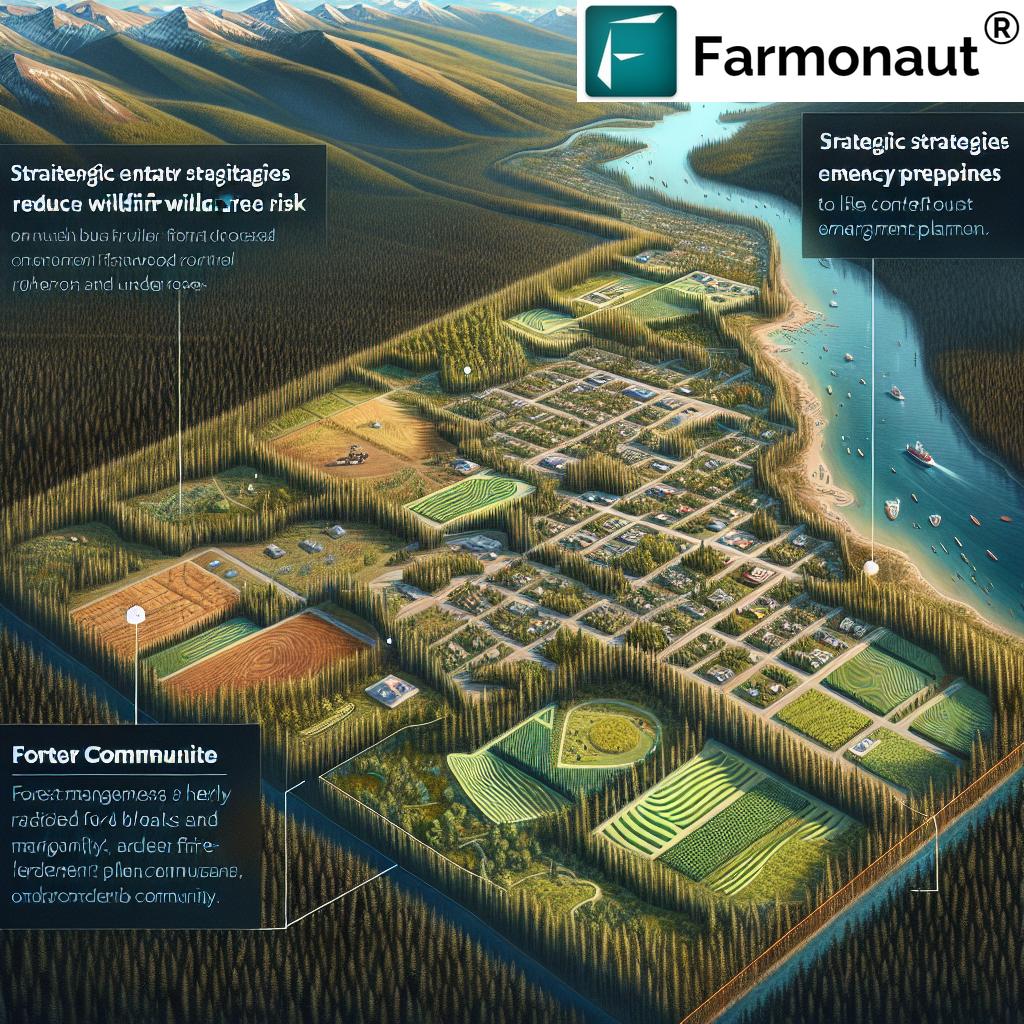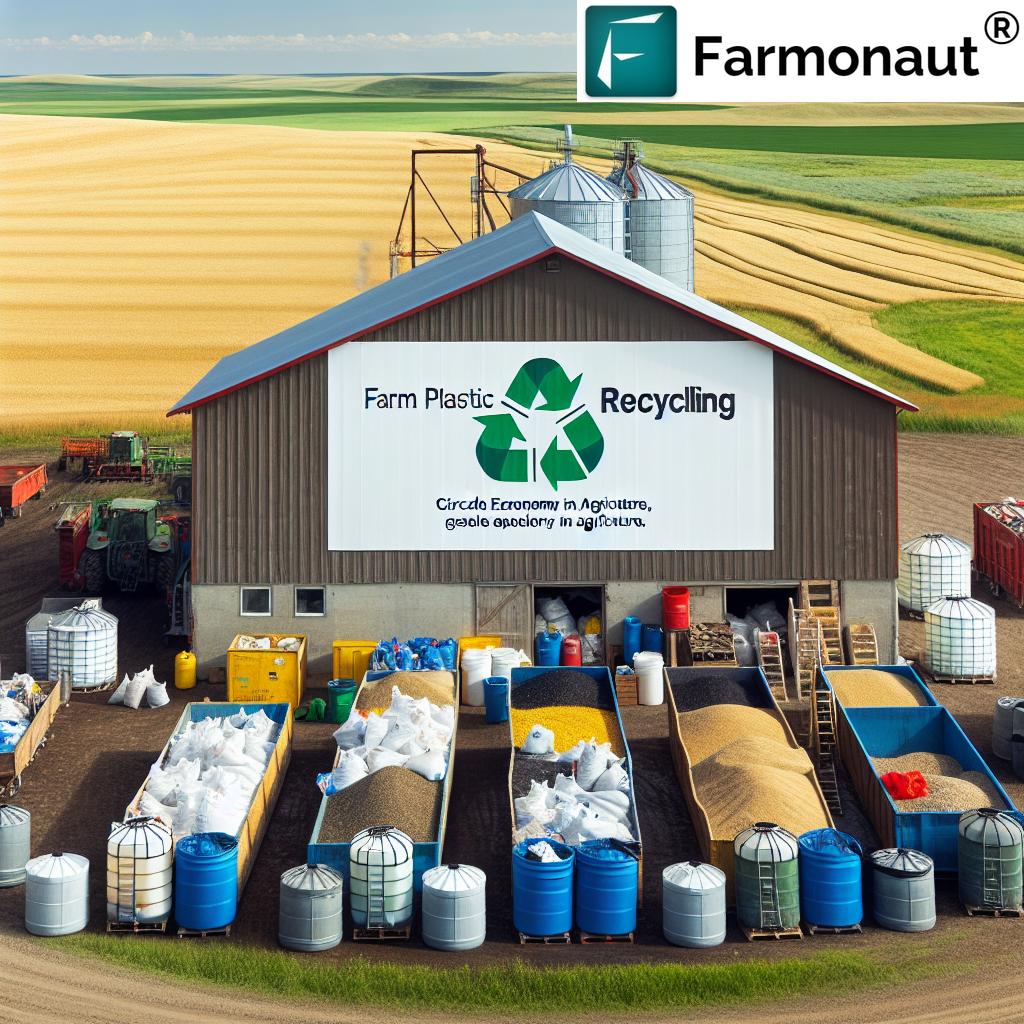Revolutionizing Alberta Farming: How Strip Tillage and Cover Crops Combat Soil Erosion
In the heart of Alberta’s agricultural landscape, a quiet revolution is taking place. Farmers across the province are embracing innovative techniques that not only protect their most valuable resource – the soil – but also pave the way for a more sustainable future in agriculture. At the forefront of this movement are strip tillage and cover crops, two practices that are transforming how we approach farming in the face of environmental challenges.

“Strip tillage disturbs only 33% of the soil, preserving structure and supporting microorganisms.”
As we delve into the world of conservation agriculture, we’ll explore how these methods are not just combating soil erosion but are also reshaping the entire farming ecosystem in Alberta. From improving soil health to enhancing crop yields, the benefits of these practices are far-reaching and profound.
The Challenge: Soil Erosion in Alberta
Alberta’s agricultural sector has long been a cornerstone of the province’s economy. However, conventional farming practices have taken their toll on the soil over the years. Wind and water erosion have been persistent threats, carrying away valuable topsoil and nutrients essential for crop growth. This erosion not only diminishes soil fertility but also contributes to environmental issues such as water pollution and reduced air quality.
- Wind erosion: Particularly problematic in open fields
- Water erosion: Exacerbated by heavy rainfall and snowmelt
- Loss of topsoil: Reduces soil fertility and crop productivity
- Environmental impact: Affects water quality and air purity
Recognizing these challenges, forward-thinking farmers in Alberta have turned to conservation agriculture techniques, with strip tillage and cover crops emerging as powerful tools in the fight against soil erosion.
Strip Tillage: A Precision Approach to Soil Management
Strip tillage represents a significant departure from conventional tillage methods. This innovative approach involves tilling only the portion of the soil where the crop will be planted, leaving the rest of the field undisturbed. In Alberta, farmers have found this method particularly effective in preserving soil structure while still providing an optimal seedbed for crops like canola, corn, and soybeans.
Key Benefits of Strip Tillage:
- Reduced Soil Disturbance: By tilling only a third of the field, strip tillage minimizes soil disruption, protecting beneficial microorganisms and maintaining soil structure.
- Enhanced Water Infiltration: The undisturbed areas between strips act as channels for water, improving infiltration and reducing runoff.
- Residue Management: Crop residue left on the surface helps protect against wind and water erosion.
- Precision Planting: Strip tillage allows for precise placement of seeds and fertilizers, optimizing resource use.
Farmers in Alberta using strip tillage have reported significant improvements in soil health and crop performance. The practice aligns well with the province’s variable climate, offering protection against both drought and excessive moisture conditions.
Cover Crops: Nature’s Soil Guardians
Complementing strip tillage, cover crops have emerged as another crucial element in the fight against soil erosion. These plants, grown primarily for the benefit of the soil rather than for harvest, play a multifaceted role in improving soil health and reducing erosion risk.

Functions of Cover Crops in Alberta Farming:
- Soil Protection: Cover crops shield the soil from wind and rain, preventing erosion.
- Nutrient Cycling: They capture and store nutrients, reducing leaching and improving soil fertility.
- Organic Matter Addition: As cover crops decompose, they contribute to soil organic matter, enhancing soil structure and water-holding capacity.
- Weed Suppression: Dense cover crop growth can naturally suppress weed development, reducing the need for herbicides.
Alberta farmers have experimented with various cover crop species, including cereal rye, clover, and radishes, each chosen for its specific benefits and adaptability to the local climate.
The Synergy of Strip Tillage and Cover Crops
When combined, strip tillage and cover crops create a powerful system for soil conservation and sustainable farming. This integrated approach addresses multiple aspects of soil health and erosion control:
- Year-round Soil Coverage: Cover crops protect the soil when cash crops are not present, while strip tillage preserves residue between rows.
- Improved Soil Structure: The minimal disturbance from strip tillage, coupled with the root systems of cover crops, enhances soil aggregation and stability.
- Enhanced Water Management: The system improves both water infiltration and retention, crucial in Alberta’s sometimes unpredictable climate.
- Biodiversity Promotion: This approach supports a diverse soil ecosystem, fostering resilience against pests and diseases.
“A four-year crop rotation strategy is employed to improve soil health and reduce erosion risk.”
Implementing the System: A Farmer’s Perspective
Implementing strip tillage and cover crops requires careful planning and often a shift in mindset. Alberta farmers who have adopted these practices share their experiences:
- Equipment Adaptation: Many have invested in specialized strip tillage machinery, finding the initial cost offset by long-term benefits.
- Crop Rotation Planning: A thoughtful four-year rotation strategy is often employed, integrating cover crops and cash crops for optimal soil health.
- Learning Curve: Farmers emphasize the importance of education and patience, as mastering these techniques takes time.
- Community Support: Knowledge sharing among farmers has been crucial in spreading and refining these practices.
One Alberta farmer noted, “It took us a couple of seasons to really get the hang of it, but now we’re seeing yields that match or even exceed our previous conventional methods, with the added benefit of knowing we’re building healthier soils for the future.”
The Role of Technology in Conservation Agriculture
As farmers in Alberta embrace strip tillage and cover crops, they’re also leveraging cutting-edge technology to enhance their practices. Precision agriculture tools play a crucial role in maximizing the efficiency and effectiveness of these conservation methods.
At Farmonaut, we’re at the forefront of this technological revolution in agriculture. Our satellite-based farm management solutions offer invaluable insights that complement strip tillage and cover crop strategies. Here’s how our technology is making a difference:
- Crop Health Monitoring: Our satellite imagery provides real-time data on vegetation health, helping farmers make informed decisions about their strip-tilled crops and cover crop management.
- Soil Moisture Analysis: By tracking soil moisture levels, we help farmers optimize their water management in strip-tilled fields.
- Precision Application: Our tools assist in the precise application of inputs in strip-tilled areas, reducing waste and improving efficiency.
- Field Performance Tracking: Farmers can compare the performance of strip-tilled areas with conventional methods over time.
To explore how Farmonaut can enhance your conservation agriculture practices, check out our web app or download our mobile apps:
Measuring Success: The Impact on Alberta’s Farms
The adoption of strip tillage and cover crops in Alberta has led to measurable improvements in soil health and farm sustainability. Let’s look at some key indicators:
| Farming Practice | Conventional Farming | Strip Tillage with Cover Crops |
|---|---|---|
| Soil Disturbance | High (100% of field) | Low (33% of field) |
| Erosion Risk | High | Significantly Reduced |
| Soil Organic Matter | Gradual Decline | Steady Increase |
| Weed Control | Primarily Chemical | Integrated (Mechanical + Cover Crop Suppression) |
| Crop Yield | Variable | Comparable or Higher |
These results demonstrate the potential of conservation agriculture techniques to revolutionize farming practices in Alberta, offering a path to long-term sustainability without sacrificing productivity.
Challenges and Future Directions
While the benefits of strip tillage and cover crops are clear, challenges remain in their widespread adoption:
- Initial Investment: The cost of specialized equipment can be a barrier for some farmers.
- Knowledge Gap: There’s a need for continued education and training on these techniques.
- Climate Variability: Alberta’s diverse climate requires adaptive management strategies.
- Policy Support: More supportive agricultural policies could accelerate adoption.
Looking ahead, researchers and farmers in Alberta are exploring new cover crop species, refining strip tillage techniques, and integrating advanced technologies to further improve these practices.
Conclusion: A Sustainable Future for Alberta Farming
The adoption of strip tillage and cover crops represents more than just a change in farming practices; it’s a shift towards a more sustainable and resilient agricultural future for Alberta. By combating soil erosion, improving soil health, and maintaining crop yields, these methods offer a win-win solution for farmers and the environment.
As we continue to face challenges like climate change and the need for increased food production, the lessons learned from Alberta’s farmers will be invaluable. Their success demonstrates that with innovation, dedication, and the right tools, it’s possible to farm in a way that not only meets our current needs but also preserves and enhances the land for future generations.
At Farmonaut, we’re committed to supporting this agricultural revolution. Our technology provides the data-driven insights needed to make these conservation practices even more effective. Whether you’re just starting with strip tillage or looking to optimize your cover crop strategy, our tools can help you make informed decisions and track your progress.
Explore our solutions and join the movement towards sustainable agriculture:
For developers interested in integrating our satellite and weather data into their own systems, check out our API and API Developer Docs.
FAQ Section
- Q: What is strip tillage?
A: Strip tillage is a conservation agriculture technique where only the portion of soil where the crop will be planted is tilled, leaving the rest of the field undisturbed. This method reduces soil erosion and preserves soil structure. - Q: How do cover crops benefit soil health?
A: Cover crops protect the soil from erosion, improve soil structure, add organic matter, enhance water infiltration, and help in nutrient cycling. They also suppress weeds and can break pest cycles. - Q: Can strip tillage and cover crops work in Alberta’s climate?
A: Yes, these practices have been successfully adapted to Alberta’s diverse climate. They help in managing both drought and excessive moisture conditions. - Q: Are yields comparable to conventional farming methods?
A: Many farmers report yields that are comparable or even higher than conventional methods, especially over time as soil health improves. - Q: What types of crops work well with strip tillage in Alberta?
A: Crops like canola, corn, and soybeans have shown good results with strip tillage in Alberta.
As we continue to innovate and adapt our farming practices, the future of agriculture in Alberta looks bright. By embracing conservation techniques like strip tillage and cover crops, and leveraging advanced technologies, we’re not just farming for today – we’re cultivating a sustainable legacy for generations to come.
















